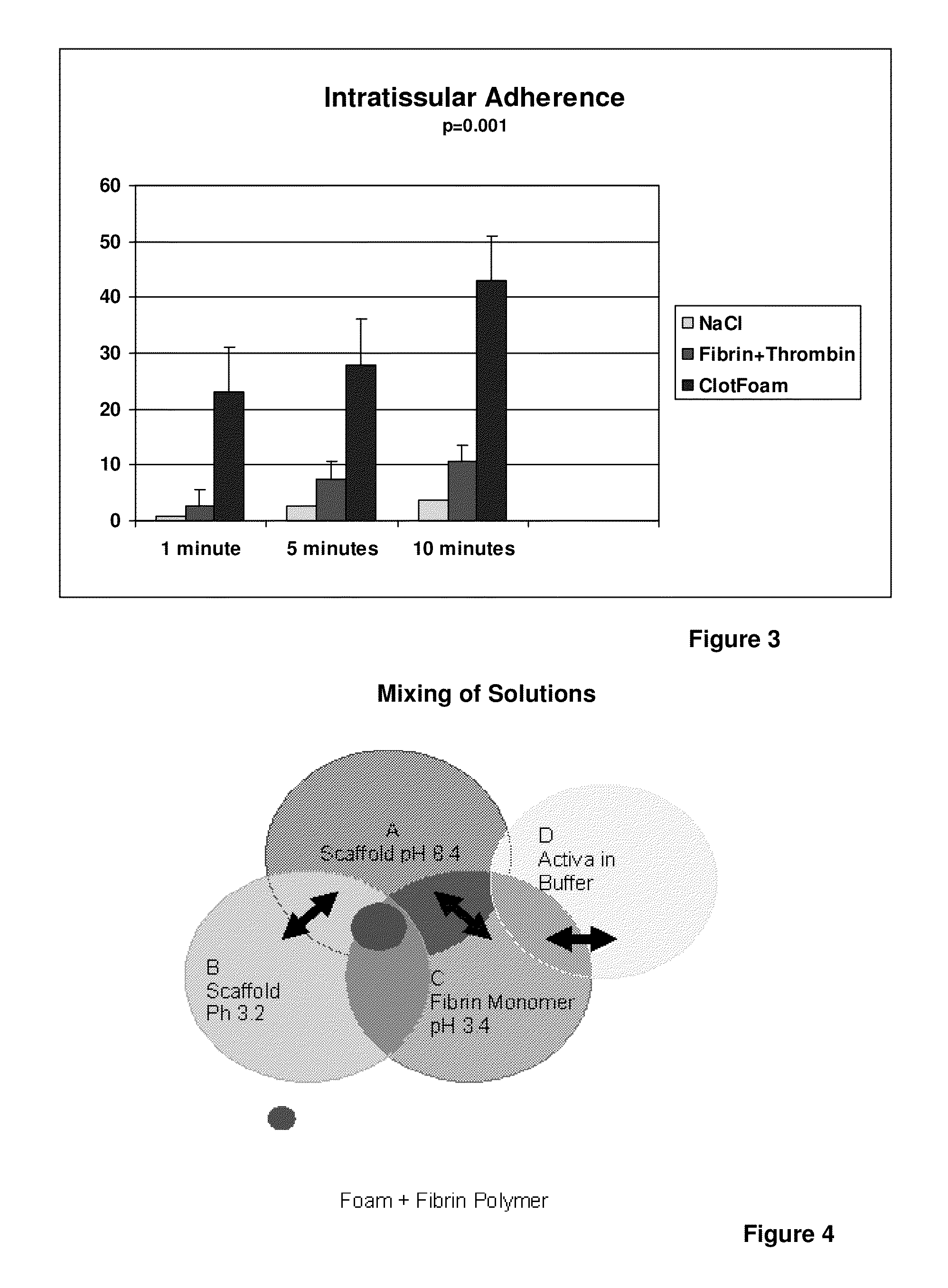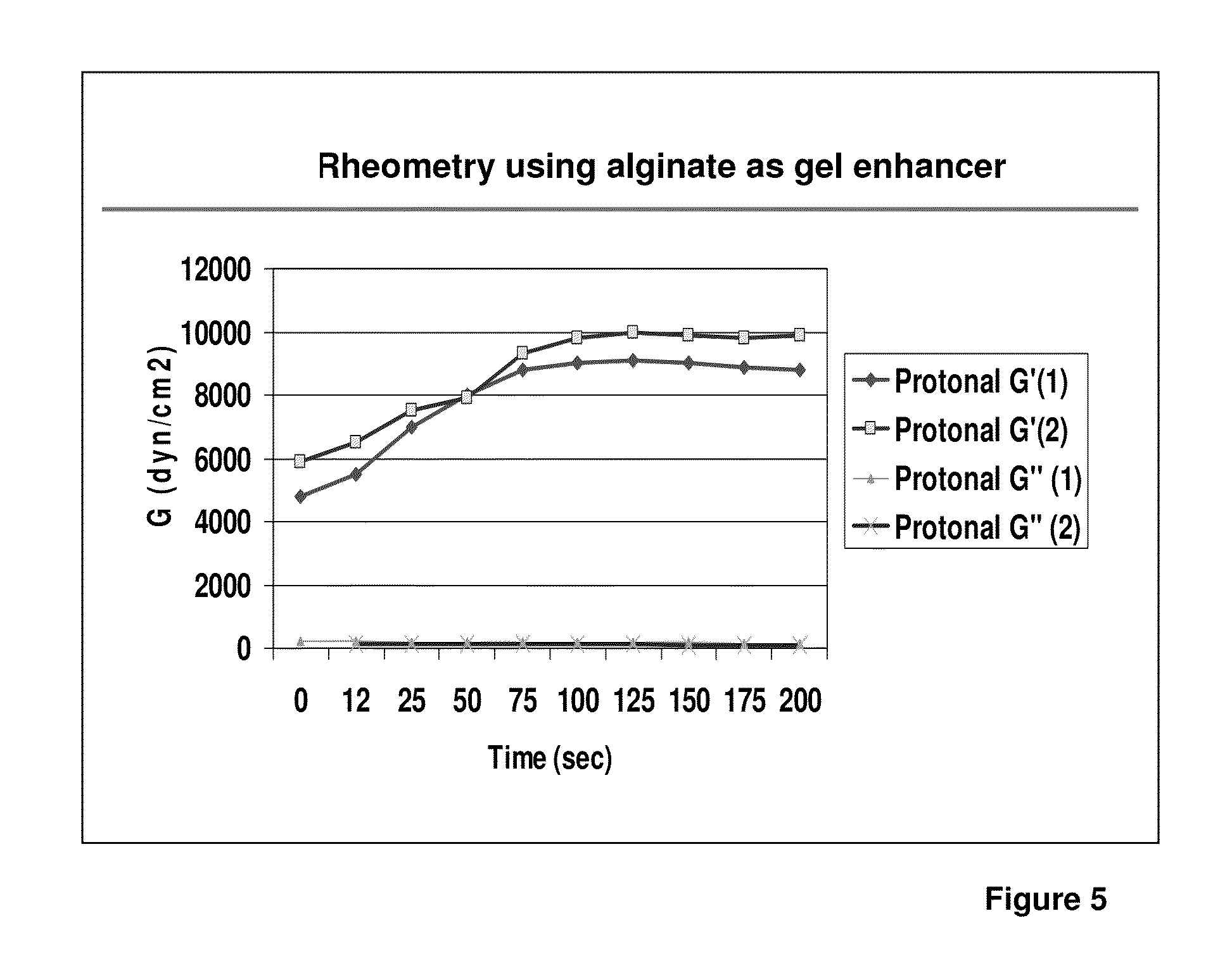Tissue sealant for use in non-compressible hemorrhage
a tissue sealant and hemorrhage technology, applied in the direction of prosthesis, extracellular fluid disorder, peptide/protein ingredients, etc., can solve the problems of traumatic injury being a frequent cause of morbidity and mortality worldwide, hemorrhage still remains, late death and complications, etc., to achieve excellent hemostatic agent candidate, minimal risk, and little training
- Summary
- Abstract
- Description
- Claims
- Application Information
AI Technical Summary
Benefits of technology
Problems solved by technology
Method used
Image
Examples
examples
1. Adhesion and Viscoelastic Properties
[0073]The adhesion characteristics to vital human tissue and the kinetics of polymerization of the gel have been tested in in-vitro and ex-vivo studies.
1.1. Adhesion properties
[0074]Adhesion and tensile measurements (Intratissular adherence and clot strength) were conducted in Sprague-Dawley rats' liver tissue. The liver was chosen because is the most frequently damaged organ in intraperitoneal trauma, followed by the spleen. Experimental Models Sprague-Dawley rats (250 to 300 g) were anesthetized. The abdominal cavity was approached medially; and the liver was completely dissected out and excised. The liver was chosen because it is the most frequently damaged organ in intraperitoneal non-compressible hemorrhage followed by the spleen. We conducted adhesion and tensile studies with an isometric transducer.
1.1.1 Tensile Measurements:
[0075]The two largest lobes separated. One lobe was attached to a holder that was fixed later to the isometric tra...
PUM
| Property | Measurement | Unit |
|---|---|---|
| viscosity | aaaaa | aaaaa |
| viscosity | aaaaa | aaaaa |
| concentration | aaaaa | aaaaa |
Abstract
Description
Claims
Application Information
 Login to View More
Login to View More - R&D
- Intellectual Property
- Life Sciences
- Materials
- Tech Scout
- Unparalleled Data Quality
- Higher Quality Content
- 60% Fewer Hallucinations
Browse by: Latest US Patents, China's latest patents, Technical Efficacy Thesaurus, Application Domain, Technology Topic, Popular Technical Reports.
© 2025 PatSnap. All rights reserved.Legal|Privacy policy|Modern Slavery Act Transparency Statement|Sitemap|About US| Contact US: help@patsnap.com



